Design Compact Absorptive Common-Mode Noise Suppression Filter with Series Unified Circuit
Abstract
1. Introduction
2. Methodology
2.1. Common-Mode Noise Filter Design Concepts
2.2. Proposed Methodology
2.3. Equivalent Circuit of the Reflective Stage
2.4. Design Procedures of The Matching Stage
3. Validation and Measurement
4. Conclusions
Author Contributions
Funding
Institutional Review Board Statement
Informed Consent Statement
Data Availability Statement
Conflicts of Interest
References
- Wu, T.-L.; Buesink, F.; Canavero, F. Overview of Signal Integrity and EMC Design Technologies on PCB: Fundamentals and Latest Progress. IEEE Trans. Electromagn. Compat. 2013, 55, 624–638. [Google Scholar] [CrossRef]
- Izadi, O.H.; Hosseinbeig, A.; Li, G.; Pommerenke, D. Effects of Mechanical Tolerances of USB 2.0 Cables on Skew and Radiated Emission. IEEE Trans. Electromagn. Compat. 2020, 62, 249–257. [Google Scholar] [CrossRef]
- Park, H.H. Reduction of Electromagnetic Noise Coupling to Antennas in Metal-Framed Smartphones Using Ferrite Sheets and Multi-Via EBG Structures. IEEE Trans. Electromagn. Compat. 2018, 60, 394–401. [Google Scholar] [CrossRef]
- Rathi, V.; Panwar, V. Electromagnetic Interference Shielding Analysis of Conducting Composites in Near- and Far-Field Region. IEEE Trans. Electromagn. Compat. 2018, 60, 1795–1801. [Google Scholar] [CrossRef]
- Alban, E.X.; Sajuyigbe, S.; Skinner, H.; Alcocer, A.; Camacho, R. Mitigation techniques for RFI due to broadband noise. In Proceedings of the 2014 IEEE International Symposium on Electromagnetic Compatibility (EMC), Raleigh, NC, USA, 4–8 August 2014; pp. 159–164. [Google Scholar]
- Huang, Q.; Zhang, L.; Rajagopalan, J.; Pai, D.; Chen, C.; Gaikwad, A.; Hwang, C.; Fan, J. A Novel RFI Mitigation Method Using Source Rotation. IEEE Trans. Electromagn. Compat. 2021, 63, 11–18. [Google Scholar] [CrossRef]
- Hsiao, C.-Y.; Tsai, C.-H.; Chiu, C.-N.; Wu, T.-L. Radiation Suppression for Cable-Attached Packages Utilizing a Compact Embedded Common-Mode Filter. IEEE Trans. Compon. Packag. Manuf. Technol. 2012, 2, 1696–1703. [Google Scholar] [CrossRef]
- Hsiao, C.-Y.; Cheng, C.-H.; Wu, T.-L. A New Broadband Common-Mode Noise Absorption Circuit for High-Speed Differential Digital Systems. IEEE Trans. Microw. Theory Tech. 2015, 63, 1894–1901. [Google Scholar] [CrossRef]
- Li, P.-J.; Tseng, Y.-C.; Cheng, C.-H.; Wu, T.-L. A Novel Absorptive Common-Mode Filter for Cable Radiation Reduction. IEEE Trans. Compon. Packag. Manuf. Technol. 2017, 7, 511–518. [Google Scholar] [CrossRef]
- Li, P.-J.; Cheng, C.-H.; Wu, T.-L. A Resistor-Free Absorptive Common-Mode Filter Using Gap-Coupled Resonator. IEEE Microw. Wirel. Compon. Lett. 2018, 28, 885–887. [Google Scholar] [CrossRef]
- Li, P.-J.; Wu, T.-L. Synthesized Method of Dual-Band Common-Mode Noise Absorption Circuits. IEEE Trans. Microw. Theory Tech. 2019, 67, 1392–1401. [Google Scholar] [CrossRef]
- Huang, Y.-C.; Cheng, C.-H.; Wu, T.-L. A Synthesized Method for Common-Mode Noise Suppression Filters with Specified Common-Mode and Differential Mode Response. IEEE Trans. Electromagn. Compat. 2019, 61, 893–902. [Google Scholar] [CrossRef]
- Cheng, C.-H.; Wu, T.-L. Analysis and Design Method of a Novel Absorptive Common-Mode Filter. IEEE Trans. Microw. Theory Tech. 2019, 67, 1826–1835. [Google Scholar] [CrossRef]
- Li, P.-J.; Wu, T.-L. A Novel Circuit Architecture of Bidirectional Common-Mode Noise Absorption Circuit. IEEE Trans. Microw. Theory Tech. 2020, 68, 1476–1486. [Google Scholar] [CrossRef]
- Liu, H.-W.; Cheng, C.-H.; Li, P.-J.; Wu, T.-L. A Novel Compact Single-Stage Absorption Common-Mode Filter. IEEE Trans. Electromagn. Compat. 2022, 64, 111–118. [Google Scholar] [CrossRef]
- Shiue, G.-H.; Hsu, C.-M.; Yeh, C.-L.; Hsu, C.-F. A Comprehensive Investigation of a Common-Mode Filter for Gigahertz Differential Signals Using Quarter-Wavelength Resonators. IEEE Trans. Compon. Packag. Manuf. Technol. 2014, 4, 134–144. [Google Scholar] [CrossRef]
- Adiprabowo, T.; Lin, D.-B.; Zheng, Y.-H.; Chen, Y.-H.; Zhuang, C.-Y.; Tsai, B.-H. Dual-Band High Absorbing and Broadband Suppressing Common-Mode Noise Filter. IEEE Trans. Electromagn. Compat. 2022, 64, 386–395. [Google Scholar] [CrossRef]
- Zhuang, C.-Y.; Adiprabowo, T.; Lin, D.-B.; Chen, Y.-H.; Zheng, Y.-H.; Tsai, B.-H.; Pramudita, A.A. A Broadband Common-Mode Filter by Using Dual Band Transmission Zero. In Proceedings of the 2021 Asia-Pacific International Symposium on Electromagnetic Compatibility (APEMC), Nusa Dua-Bali, Indonesia, 27–30 September 2021; pp. 1–3. [Google Scholar]
- Pozar, D.M. Microwave filters. In Microwave Engineering, 4th ed.; Wiley: Hoboken, NJ, USA, 2011; pp. 380–450. [Google Scholar]
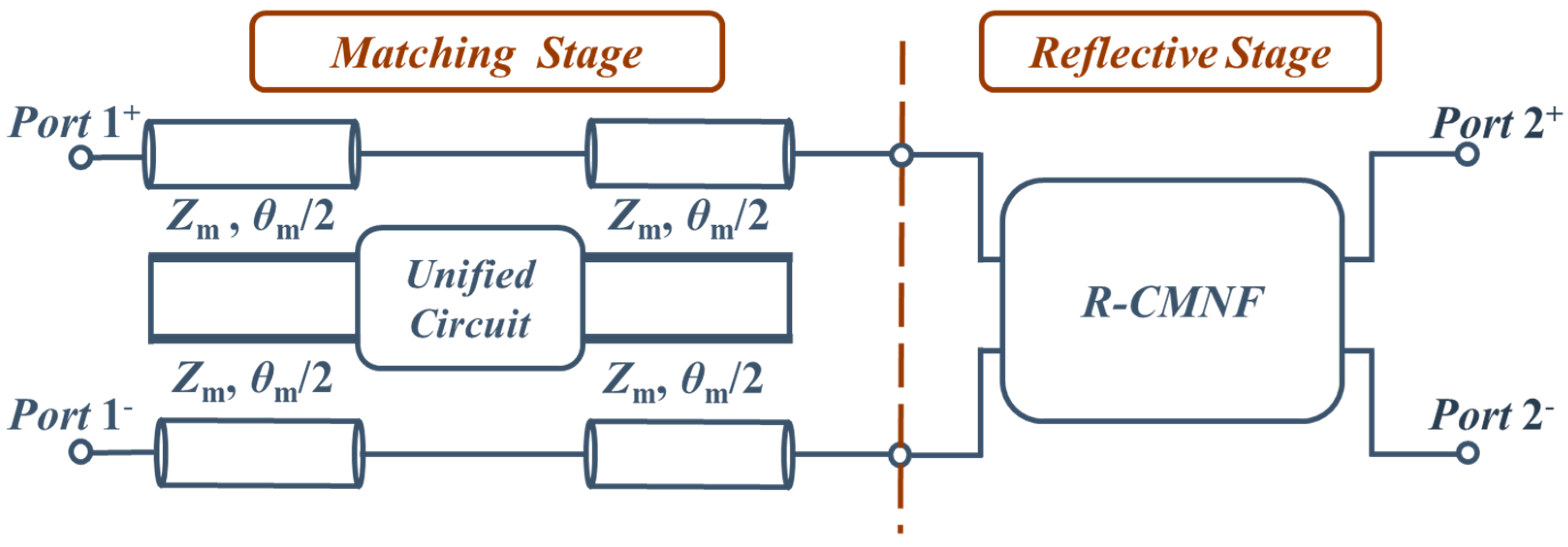

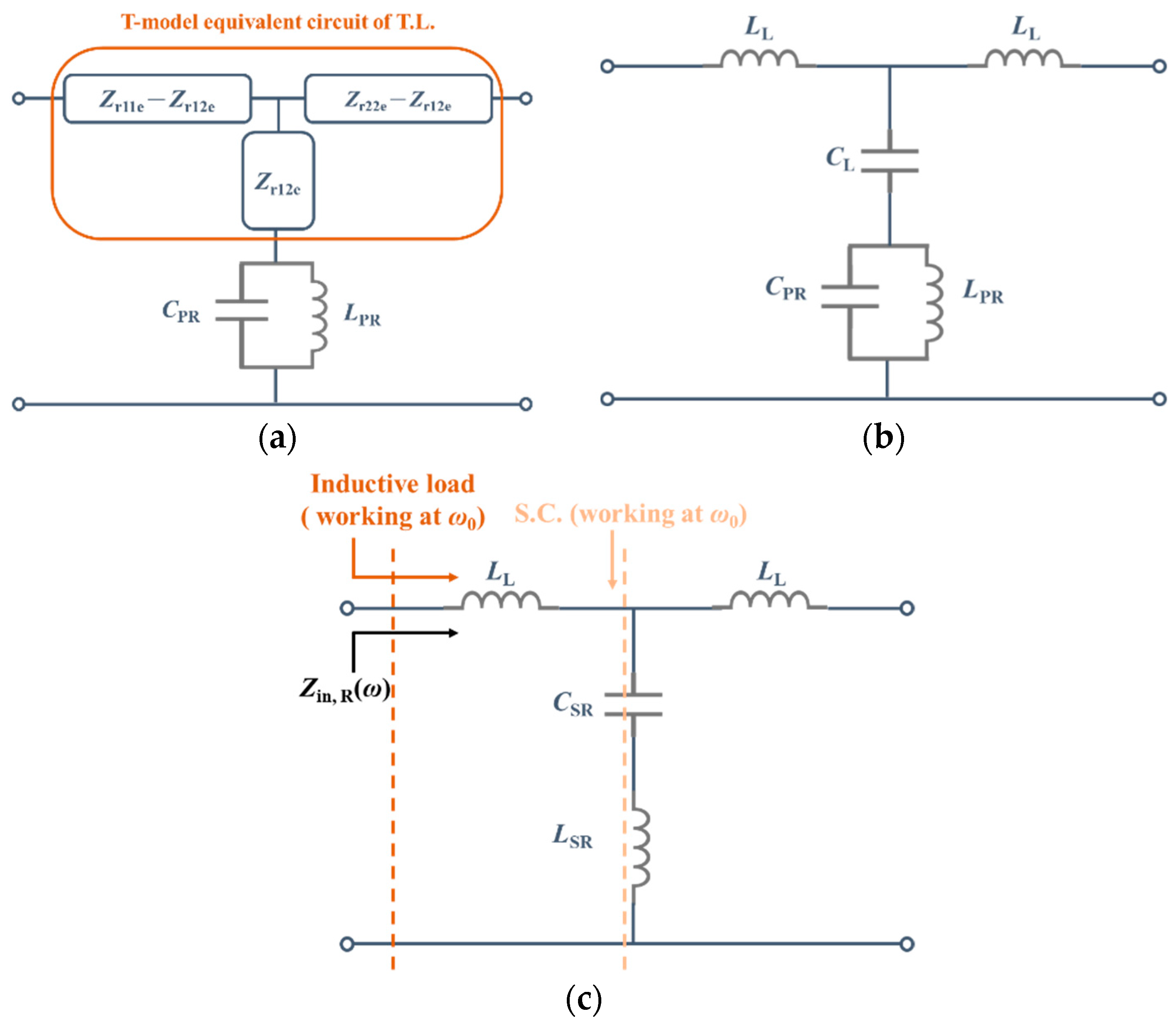

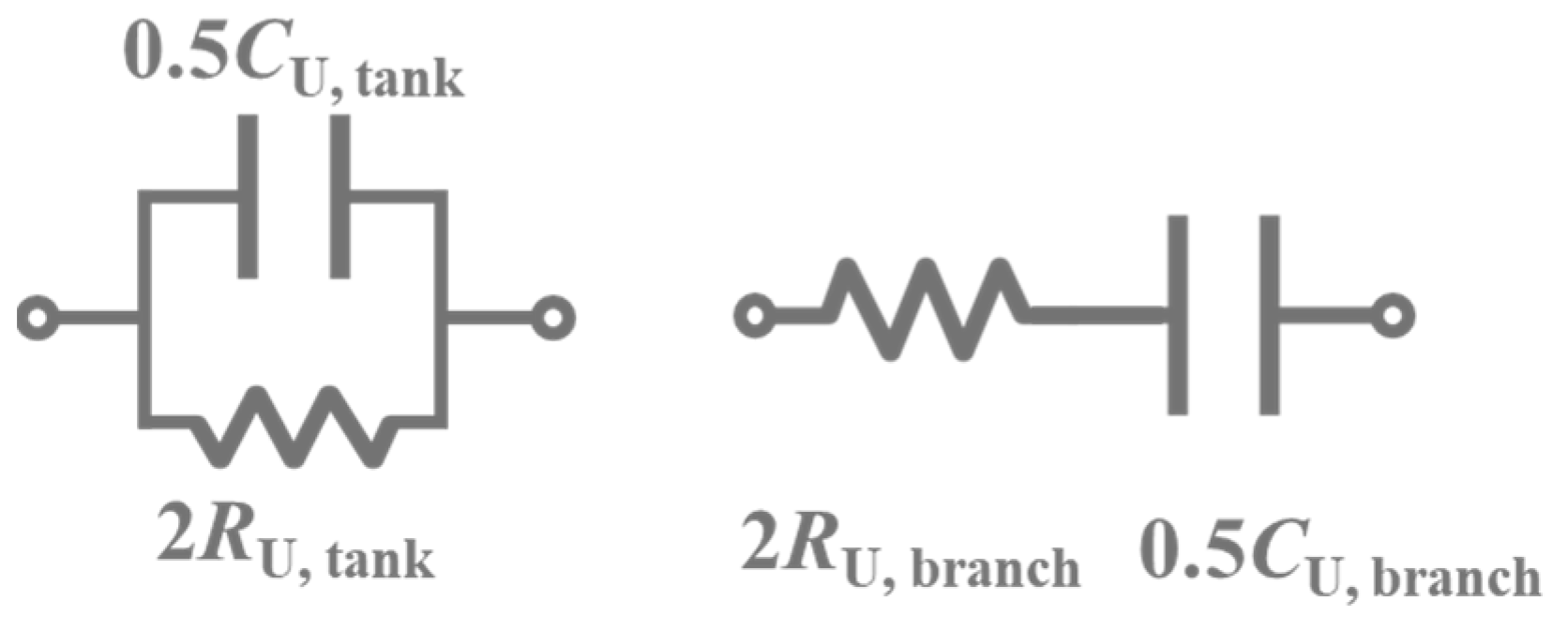
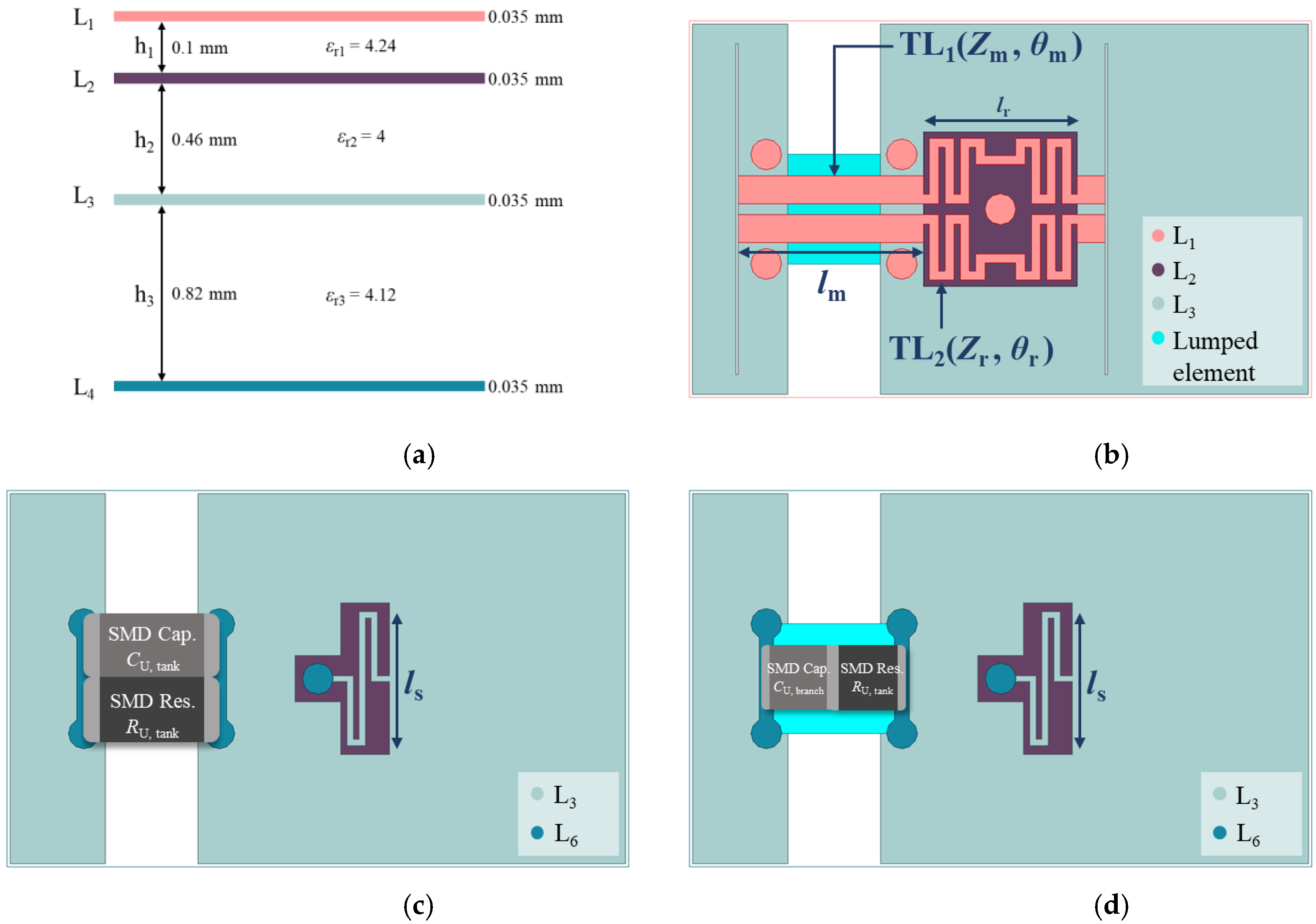

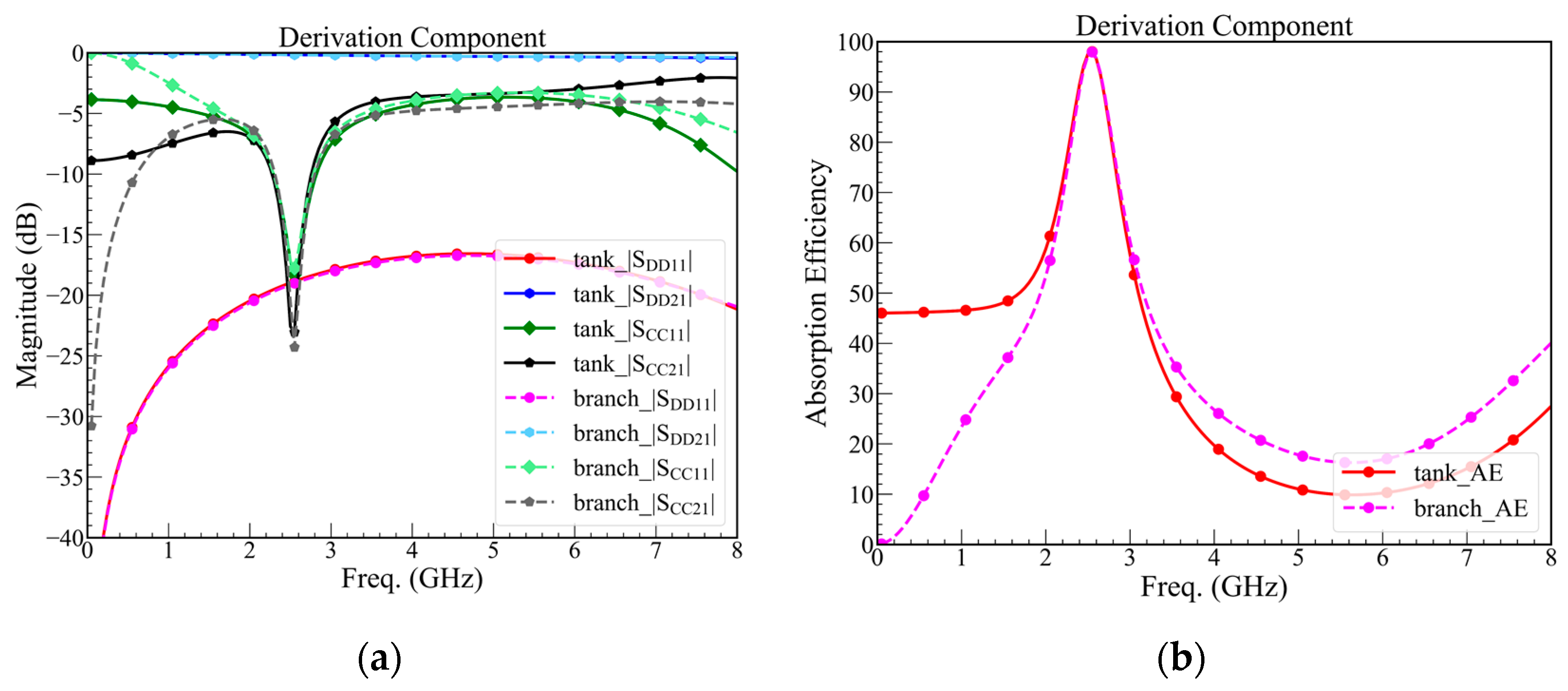

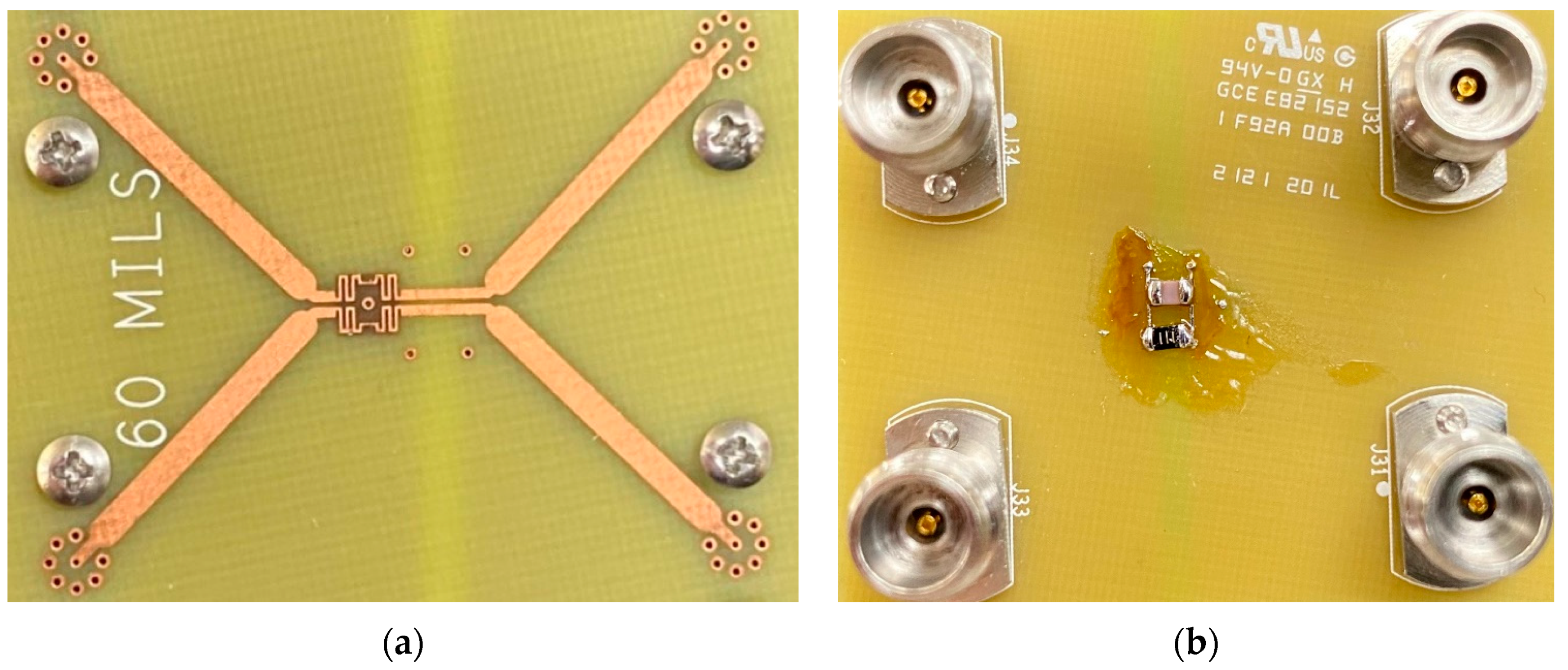
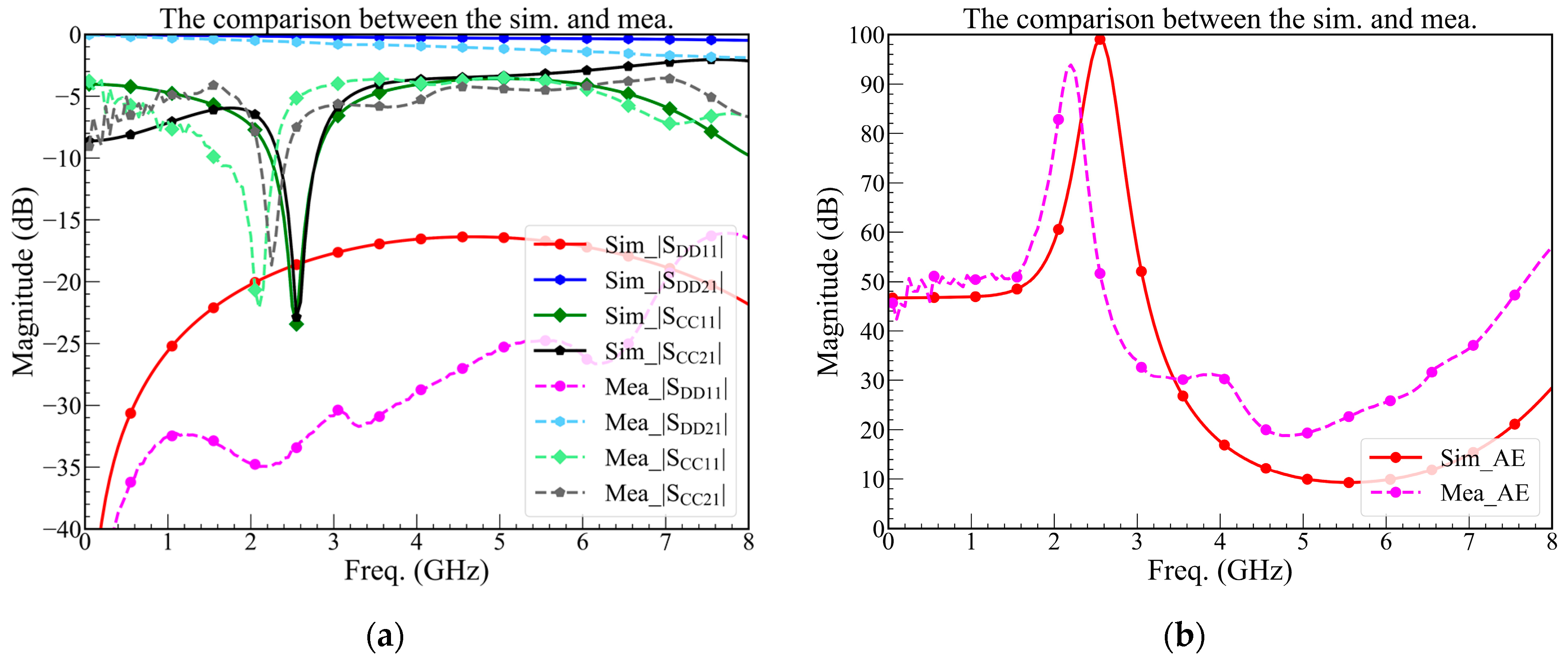
| Line Width/Spacing | Reference Plane 1 | Zodd | Zeven |
|---|---|---|---|
| 0.15/0.18 mm | L2 | 49.72 Ω | 60 Ω |
| 0.46/0.18 mm | L3 | 49.94 Ω | 103.5 Ω |
| θm | θr | ls | lm | lr |
|---|---|---|---|---|
| λ/24 (15°) | λ/8 (45°) | 2.2 mm | 2.54 mm | 2.54 mm |
| ZU(ω0) | RU,tank | RU,branch | CU,tank | CU,branch |
|---|---|---|---|---|
| 100-j105Ω | 105 Ω | 50 Ω | 0.65 pF | 1.24 pF |
| Work | Area (λg2) 1 | Layer | CMNA-BW 2 |
|---|---|---|---|
| [9] | 0.0042 | 4 | 2.0–2.3 GHz |
| [10] | 0.0127 | 4 | 2.4–2.5 GHz |
| [13] | 0.0848 | 2 | 1.8–3.0 GHz |
| [15] | 0.0358 | 2 | 2.33–2.67 GHz |
| Proposed | 0.00316 | 4 | 2.1–2.3 GHz |
Disclaimer/Publisher’s Note: The statements, opinions and data contained in all publications are solely those of the individual author(s) and contributor(s) and not of MDPI and/or the editor(s). MDPI and/or the editor(s) disclaim responsibility for any injury to people or property resulting from any ideas, methods, instructions or products referred to in the content. |
© 2023 by the authors. Licensee MDPI, Basel, Switzerland. This article is an open access article distributed under the terms and conditions of the Creative Commons Attribution (CC BY) license (https://creativecommons.org/licenses/by/4.0/).
Share and Cite
Zhuang, C.-Y.; Lin, D.-B. Design Compact Absorptive Common-Mode Noise Suppression Filter with Series Unified Circuit. Sensors 2023, 23, 957. https://doi.org/10.3390/s23020957
Zhuang C-Y, Lin D-B. Design Compact Absorptive Common-Mode Noise Suppression Filter with Series Unified Circuit. Sensors. 2023; 23(2):957. https://doi.org/10.3390/s23020957
Chicago/Turabian StyleZhuang, Cheng-Yi, and Ding-Bing Lin. 2023. "Design Compact Absorptive Common-Mode Noise Suppression Filter with Series Unified Circuit" Sensors 23, no. 2: 957. https://doi.org/10.3390/s23020957
APA StyleZhuang, C.-Y., & Lin, D.-B. (2023). Design Compact Absorptive Common-Mode Noise Suppression Filter with Series Unified Circuit. Sensors, 23(2), 957. https://doi.org/10.3390/s23020957






